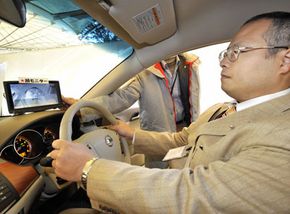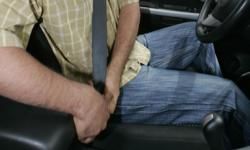There are few things more unsettling than seeing a large tractor-trailer drift gently and then suddenly swerve back into its lane. Driving down the highway at night, your car filled with sleeping family members, you'll likely ease off the accelerator and allow the distance to grow between you and the semi -- or hit the gas and leave it far behind.
Sleepy truck drivers have been an issue for about as long as commercial trucking has been around. They operate large, lumbering vehicles that could take out several cars at once. Due to the rigs' size, they can't be maneuvered as quickly as cars or light trucks. And truck drivers simply drive more than other drivers. They may push themselves beyond the limits demanded by the sleep cycle -- the pattern of sleep and wakefulness -- in order to deliver their haul and get home.
Advertisement
The problem posed by snoozing truckers has prompted a glut of studies on how to address the issue of nodding off behind the wheel. These studies have led to regulation and new technologies. The federal government mandates that truckers can drive for no more than 12 hours before taking a mandatory 10-hour break [archived source: Dallas Morning News. Researchers have created inventions to keep truckers awake, like LED lights that simulate morning light to trick truckers' circadian rhythm -- the body's natural clock -- into thinking it's morning and time to wake up [source: ScienceDaily].
While truckers make great subjects for tests that aim to solve the problem of drowsy drivers, they're hardly the only ones who fall asleep at the wheel. Auto safety researchers have come up with some clever ways to rouse sleepy drivers in passenger vehicles, too. So will your next car wake you up when you fall asleep? That's a real possibility, especially if you're planning on shelling out the money for a luxury car when you buy your next automobile.
What high-tech systems aim to keep you bright-eyed and bushy-tailed when you drive? Find out on the next page.
Advertisement




